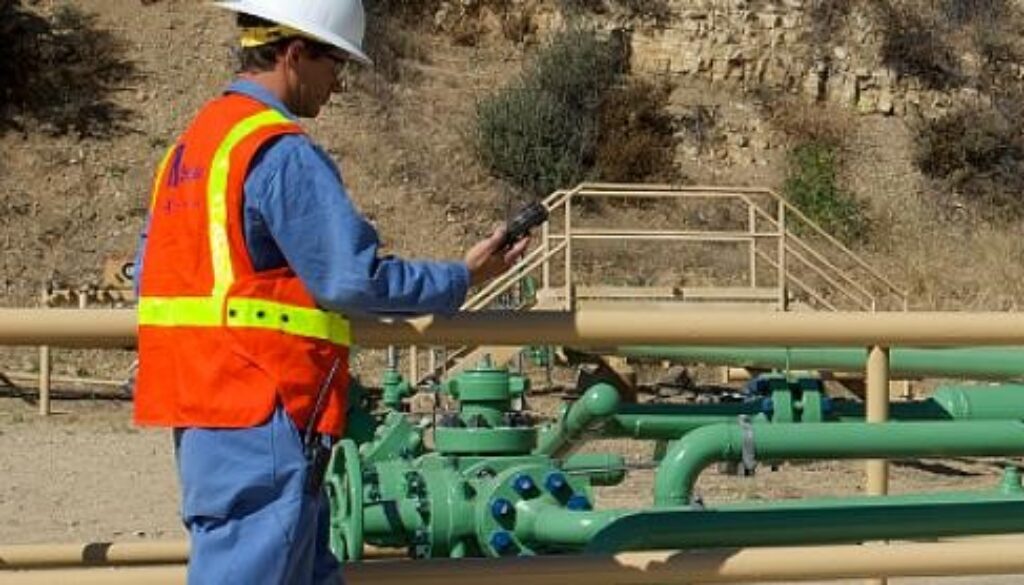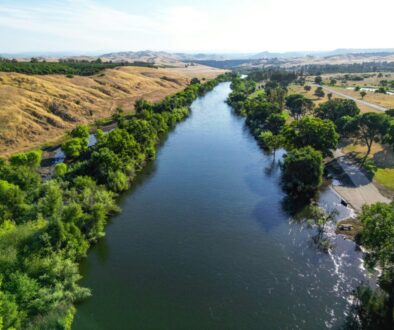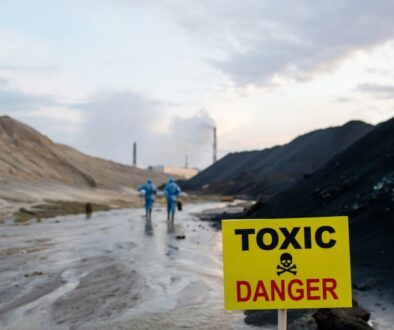Postcard from California: Roadblocks on the path to phase out gas
 The October 2015 blowout at Aliso Canyon – a vast network of underground natural gas storage wells in Los Angeles’ San Fernando Valley – stands as one of the worst environmental disasters in California history.
The October 2015 blowout at Aliso Canyon – a vast network of underground natural gas storage wells in Los Angeles’ San Fernando Valley – stands as one of the worst environmental disasters in California history.
Before it was capped after 112 days, the leak spewed forth 5 billion cubic feet of methane and other noxious gases, temporarily displacing nearly 10,000 families from the downwind Porter Ranch community. Residents suffered severe headaches, nausea, nosebleeds and other symptoms, and the fear of potential long-term health effects, including cancer. The US’ largest-ever leak of natural gas sprang from a rupture in a well casing from which owner SoCalGas had decades earlier removed, but never replaced, a worn safety valve.
In 2017, then-Gov. Jerry Brown called for closure of Aliso Canyon within 10 years, to protect health and advance the state’s transition from methane gas, a potent driver of climate change, to clean energy. In 2019, Brown’s successor, Gov. Gavin Newsom, vowed to “fast-track” that timeline.
That pledge has yet to materialize: Well into Newsom’s second term, his appointees to the state Public Utilities Commission (PUC) not only have failed to set a firm date for closing Aliso Canyon but have twice raised the level for how much gas the wells can store.
Now they are poised to do it again.
This week, the PUC will vote on a petition from SoCalGas to boost the storage limit by two thirds, to more than 68 billion cubic feet – the maximum state geologists say is safe. SoCalGas claims stockpiling more fuel at Aliso Canyon would mean lower utility bills this winter, and the commission’s staff recommends approval of the proposal.
State Sen. Henry Stern, whose district includes Porter Ranch, doesn’t buy it. A statement issued by Stern and other elected officials said the PUC staff is “essentially taking the SoCalGas Company at their word.” Approval could “undercut the Governor’s commitment to closure” and would be “doubling down on gas-fired power,” the lawmakers said.
It would be a troubling stumble on the state’s legally mandated road to phasing out the use of gas and other fossil fuels by 2045 – and it’s not the only one.
This month, the state Water Resources Control Board extended the life of three gas-fired power plants in Southern California, originally scheduled to close three years ago, through 2026. (The water board oversees coastal power plants that are cooled by sucking in and discharging seawater, killing marine life.) The board said the plants are needed for backup power during emergencies – although during the killer heatwaves of 2020 and 2022, some gas plants failed to perform adequately.
Besides methane, gas plants emit chemicals and fine soot particles that form smog, which can cause respiratory illness, heart disease and cancer. At the water board meeting, dozens of residents of communities near the plants testified to the unhealthy air they must breathe. After the vote, several shouted: “You failed our community!”
Sen. Stern was also there. “We keep head-faking communities and promising them just one more extension, just one more time,” he said. He said Californians are losing trust in the state and asking, “Is this the last time?”
The water board also voted to let Los Angeles keep operating another coastal gas plant, which was slated to close next year, through 2029. The city says it needs more time to convert the plant to hydrogen power – something that’s never been attempted before.
“We’ve seen this movie before,” Steve Fleischli of the Natural Resources Defense Council told the Los Angeles Times’ Boiling Point newsletter. “Today it is green hydrogen, tomorrow will be something else once they realize that hydrogen is not the panacea that they pretend it is.”
There’s another recent setback in California’s struggle to quit gas – one that could stymie similar efforts across the US.
In 2019, Berkeley became the first US city to ban gas hookups in most new buildings, mandating all-electric appliances and heating. Berkeley cited methane’s role in the climate crisis, but studies since show that indoor cooking on gas stoves is strongly linked to childhood asthma.
The no-new-gas movement spread to more than 70 California cities and towns, and dozens more nationwide, including New York City. In May, New York State adopted the nation’s first statewide ban.
The bans became a front in America’s culture wars, as conservatives decried an attack on freedom and some chefs said they could not cook without gas. The California Restaurant Association took Berkeley to court, and in April a federal court threw out the city’s ordinance, saying only the federal government can set energy-efficiency standards.
Berkeley is appeaIing the ruling. Awaiting the outcome, some cities have backed off proposed bans, and Eugene, Ore., repealed its ordinance. This year, California Assemblyman Bill Essalyi introduced a bill that would prohibit cities from banning gas, although it garnered little support.
This week, the PUC charged that SoCalGas had tried to bill customers $732,000 for legal work by the law firm that represented the California Restaurant Association’s lawsuit against Berkeley. The company rescinded the charge after it was revealed in an investigation by The Sacramento Bee. But that sum is dwarfed by the $36 million the PUC said SoCalGas has billed customers since 2019 for political lobbying against California’s climate policies. The PUC’s Public Advocate’s office is recommending a fine of $233 million.
Earlier this month, California Attorney General Rob Bonta secured a settlement against SoCalGas for the company’s false advertising claims that gas is clean, renewable energy. Bonta charged that the company called gas “clean, affordable and renewable” in paid ads, on its website and on promotional swag at community events. Without admitting guilt, SoCalGas agreed to pay a fine of $175,000.
Both that fine and the PUC’s much larger proposed penalty are a pittance compared to the SoCalGas’ 2022 revenue of $3.8 billion. But they’re rare signs of regulators calling the natural gas industry to account for efforts to position its product as a “bridge fuel” on the path to clean energy, while working to keep polluting, climate-damaging gas plants running as long as possible. We can’t let them get away with it.
- Bill Walker has more than 40 years of experience as a journalist and environmental advocate. He lives in California’s San Joaquin Valley.
(Opinion columns published in The New Lede represent the views of the individual(s) authoring the columns and not necessarily the perspectives of TNL editors.)
 EWG
EWG


